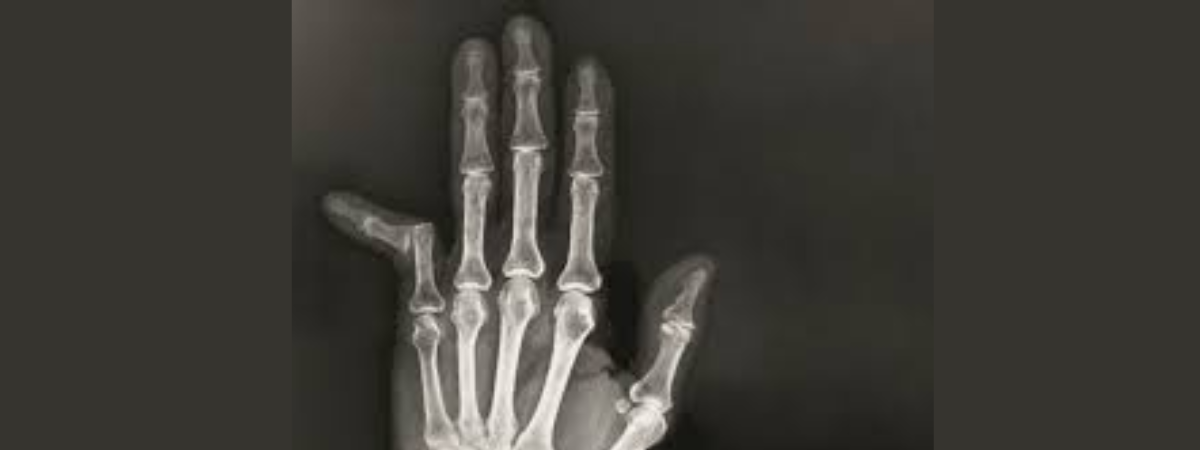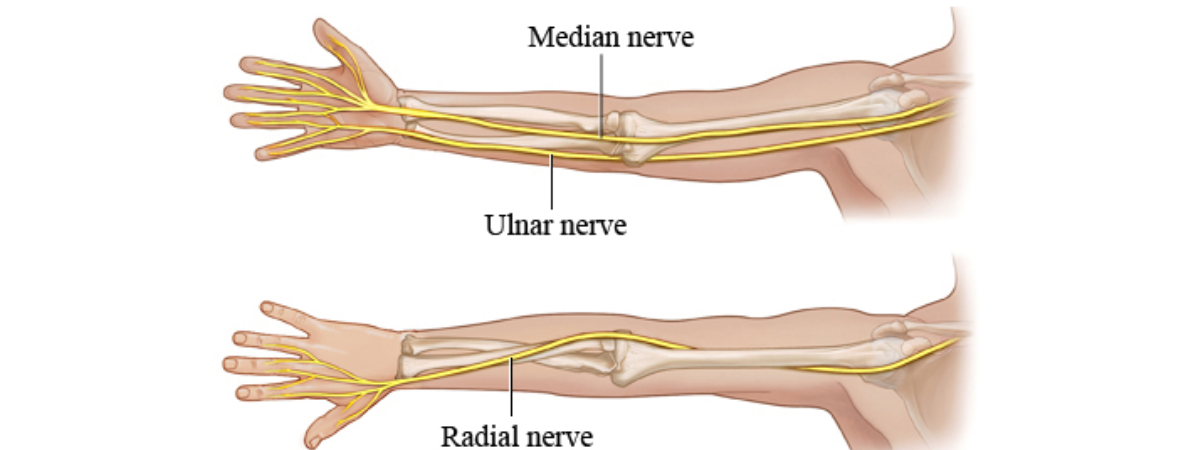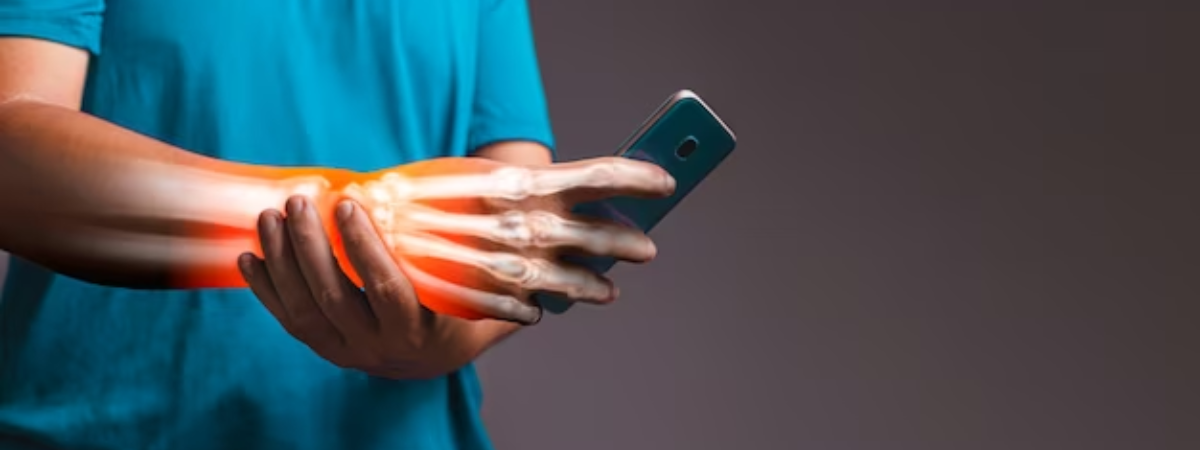Working Time
| Sunday - Friday | 07:00 AM - 11:00 PM |
| Saturday | Closed |
| Other Time | On Appointment |
Book Appointment

Introduction:
Our hands are remarkable instruments, allowing us to perform intricate tasks with precision. However, this dexterity also makes our fingers susceptible to injuries, including dislocations. The thought of a dislocated finger might evoke discomfort, but understanding the mechanics, causes, and proper management is crucial. In this blog post, we'll delve into the world of finger dislocations, exploring the anatomy, common causes, symptoms, and the steps to take for a safe and effective recovery.
Understanding Finger Anatomy:
Before delving into the intricacies of finger dislocations, it's essential to grasp the basic anatomy. Fingers are composed of bones, ligaments, tendons, and joints, all working harmoniously to facilitate movement and functionality.
Phalanges:
The finger bones, known as phalanges, are categorized into three segments: proximal, middle, and distal. These bones articulate at the joints, allowing for flexion and extension.
Joints:
Joints, where bones meet, are supported by ligaments – strong, fibrous tissues that stabilize and connect the bones. The joint capsule encapsulates the joint, and synovial fluid lubricates the articulating surfaces, promoting smooth movement.
Tendons:
Tendons connect muscles to bones, enabling the fingers to move in response to muscle contractions.
Can You Dislocate Your Finger?
Yes, you can dislocate your finger. Finger dislocation occurs when the bones that form the joint are forced out of their normal position, disrupting the alignment. This can happen due to a variety of reasons, with trauma being the most common cause.
Common Causes of Finger Dislocations:
Trauma:
Accidental trauma, such as a fall, sports injury, or impact to the hand, is a primary cause of finger dislocations. The force applied to the finger can overpower the ligaments, pushing the bones out of place.
Sports Injuries:
Sports that involve direct impact, such as football or basketball, increase the risk of finger dislocations. Athletes may experience dislocations when attempting to catch a ball or during collisions.
Accidental Falls:
Slipping and falling, especially with an outstretched hand, can result in the dislocation of one or more fingers.
Joint Hypermobility:
Some individuals naturally have more flexible joints, making them more susceptible to dislocations, even with minimal force.
Recognizing the Symptoms of Finger Dislocation:
Identifying the signs of a dislocated finger is crucial for prompt and appropriate medical intervention. Common symptoms include:
Deformity:
The affected finger may appear misaligned or deformed, with an abnormal angle at the joint.
Swelling and Bruising:
Swelling and bruising are typical responses to trauma and may be noticeable around the dislocated joint.
Pain and Tenderness:
Dislocated fingers are often accompanied by pain and tenderness at the site of the injury.
Limited Range of Motion:
Individuals may experience difficulty moving the affected finger due to the dislocation.
Numbness or Tingling:
Nerve compression or stretching during the dislocation can lead to numbness or tingling sensations in the finger.
What to Do If You Suspect a Dislocated Finger:
If you suspect a dislocated finger, it's crucial to take prompt action to minimize further damage and seek medical attention. Here's a step-by-step guide:
Immobilize the Finger:
Keep the affected finger as still as possible to prevent additional injury. You can use the finger itself or an adjacent finger as a splint.
Apply Ice:
Applying ice wrapped in a cloth can help reduce swelling and alleviate pain. Avoid applying ice directly to the skin.
Elevate the Hand:
Elevating the hand can further assist in reducing swelling. Keep the hand elevated at or slightly above the level of the heart.
Seek Medical Attention:
Visit a healthcare professional promptly for a proper diagnosis and treatment. Attempting to self-treat a dislocated finger without proper knowledge can lead to complications.
Medical Assessment and Treatment:
Upon seeking medical attention, healthcare professionals will conduct a thorough examination, possibly including X-rays, to assess the extent of the dislocation and check for associated injuries. Treatment may involve:
Reduction:
The healthcare provider will perform a reduction, a procedure to realign the dislocated bones. This may involve manipulating the bones back into their normal position.
Splinting or Taping:
After reduction, the finger may be splinted or taped to immobilize the joint during the initial stages of healing.
Pain Management:
Pain medications, either over-the-counter or prescription, may be recommended to manage pain and discomfort.
Physical Therapy:
Rehabilitation exercises under the guidance of a physical therapist may be prescribed to restore strength, flexibility, and range of motion.
Follow-Up Care:
Regular follow-up appointments are essential to monitor the healing process and make adjustments to the treatment plan as needed.
Recovery and Rehabilitation:
The duration of recovery from a dislocated finger varies depending on the severity of the injury and the individual's response to treatment. It's crucial to follow healthcare providers' instructions for rehabilitation exercises, as these are instrumental in regaining optimal function and preventing long-term complications.
Preventing Finger Dislocations:
While accidents are unpredictable, there are measures individuals can take to reduce the risk of finger dislocations:
Protective Gear:
In sports or activities with a high risk of hand injuries, wearing protective gear, such as gloves or splints, can provide an extra layer of defense.
Strengthening Exercises:
Incorporating finger and hand strengthening exercises into a regular fitness routine can enhance joint stability.
Proper Technique:
Adhering to proper techniques in sports and activities minimizes the risk of injury. This includes learning and practicing correct techniques for catching, gripping, and handling objects.
Maintaining Joint Health:
Overall joint health, including a balanced diet and hydration, contributes to the resilience of ligaments and tendons.
Conclusion:
A dislocated finger may be a painful experience, but with prompt medical attention and proper care, individuals can achieve a full recovery. Recognizing the symptoms, seeking immediate treatment, and diligently following rehabilitation protocols are crucial steps in the journey towards healing. By understanding the mechanics of finger dislocations and taking preventive measures, individuals can empower themselves to protect their hands and maintain optimal hand function for the tasks life demands.
About the Author: Dr. Srikanth Varma
Dr. Srikanth Varma, a distinguished Orthopaedic Surgeon, is a specialist in Orthopaedic and Hand Surgery in Al Nahda, Dubai. Armed with qualifications including MBBS, MS (Orthopedics), FNB, FIAS, and FIAP, Dr. Racherla is a seasoned professional in the field. His expertise lies in Trauma, Hand, and Wrist surgeries, with a particular focus on Reconstructive Microsurgery, Peripheral Nerve Surgery, and Tendon Repairs and Transfers. Renowned for his commitment to excellence, Dr. Srikanth Varma is a trusted name in delivering comprehensive orthopaedic care in the dynamic medical landscape of Al Nahda, Dubai.
Recent Posts
Navigating the Dislocation Dilemma: Can Your Finger Take the Hit?

Read More
Navigating the Intricacies: Unraveling the Major Nerves of the Hand

Read More
Decoding Connective Tissues: Unveiling the Differences Between Tendons and Ligaments

Read More
Navigating the Road to Recovery: Understanding the Expected Recovery Time of a Torn Bicep

Read More
Pinched Nerve? Here’s 7 Home Remedies to Help Reduce Some Pain

Read More
Is Your Phone Causing Wrist Discomfort? Exploring the Link with Dr. Srikanth Varma, Orthopedic Hand and Micro Surgeon in Al-Nahda

Read More

